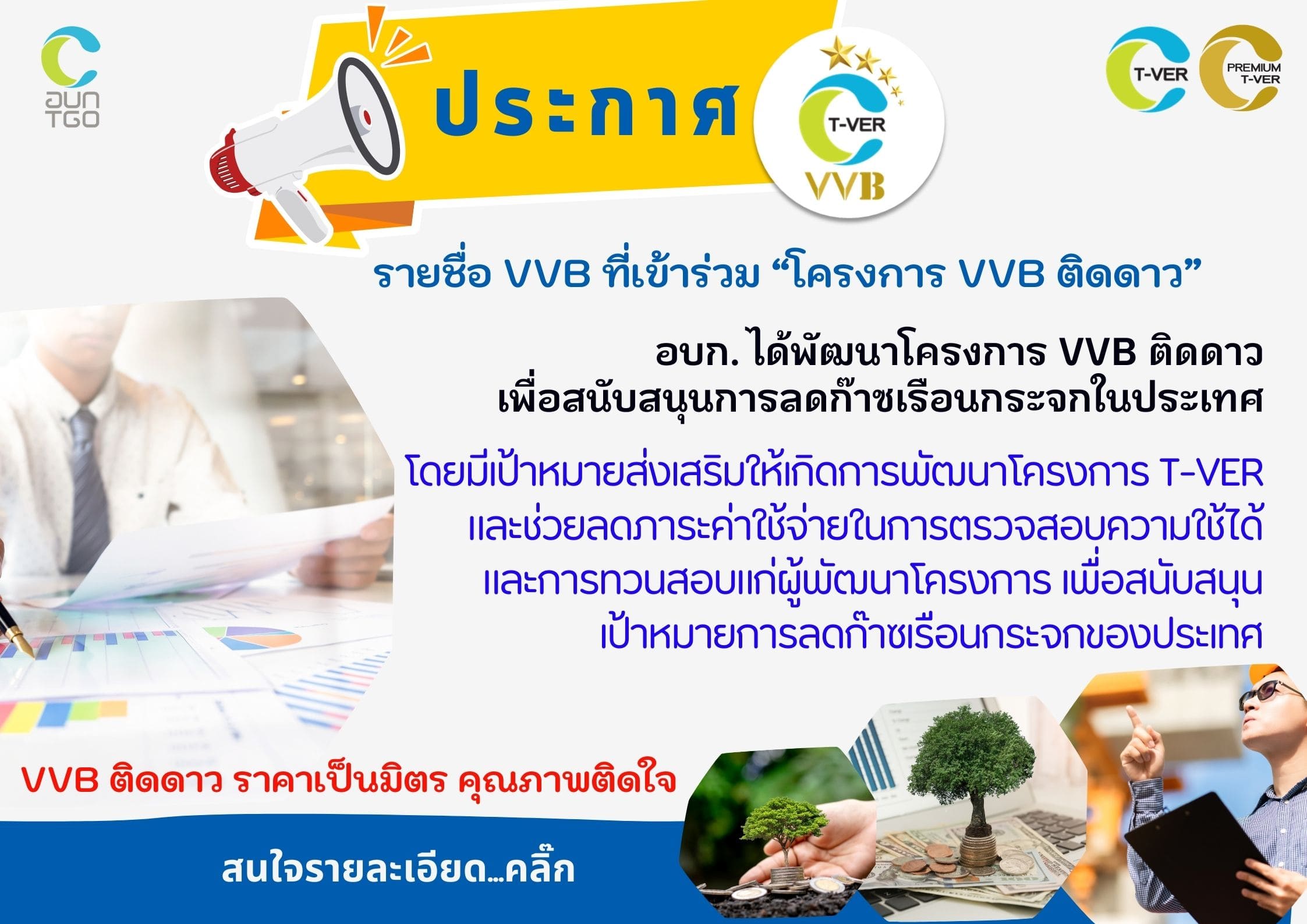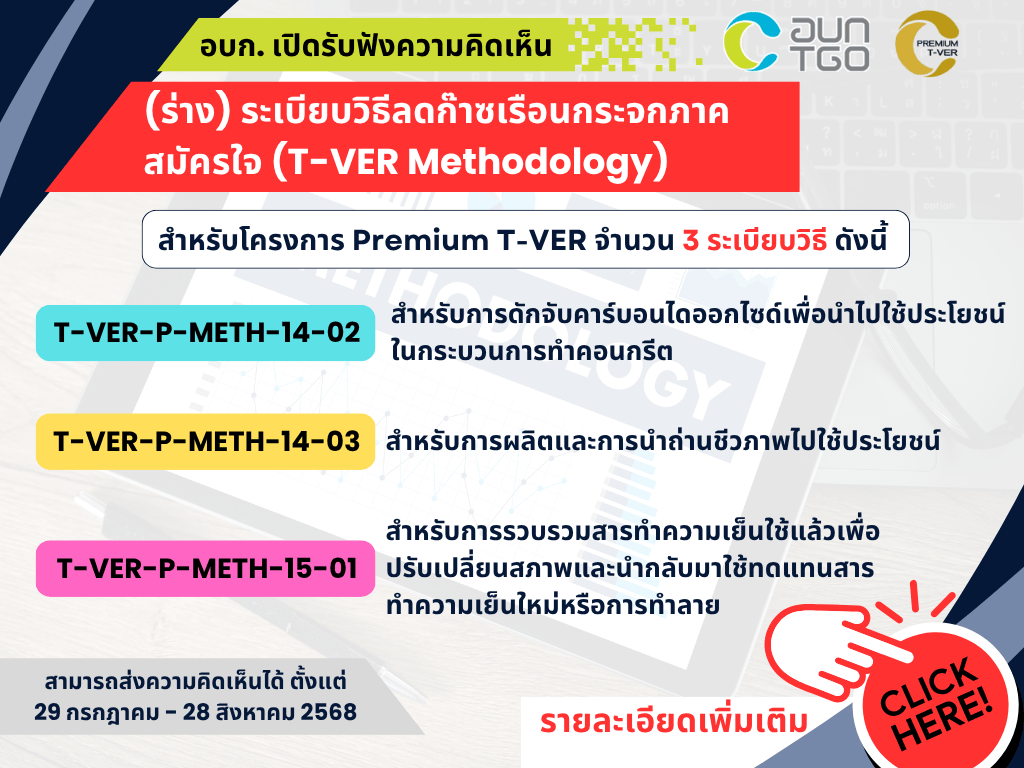Questions and Answer about T-VER

What is the timeframe for T-VER credit issuance for each project type? How to specify the start date for T-VER credit calculation?
Timeframe for T-VER credit calculation can be divided into 2 main groups as follow:
For general projects, the timeframe for T-VER credit issuance is 7 years, including
- - Renewable Energy
- - Energy Efficiency
- - Transportation management
- - Waste Management
- - Agriculture
- - Others as specified by TGO
- - Plantation/Reforestation
- - Rehabilitation and Conservation of Forest

What is “Additionality” and how to achieve it?
The assurance of additionality comes from the concept under the Clean Development Mechanism (CDM) with the purpose to prove that such GHG emission reduction project will not be feasible if there is no income generated from trading carbon credit. This will provide the assurance to the buyer of carbon credit that income received by the project developer from selling carbon credit is the main reason to make the project feasible.
Large GHG emission reduction projects not falling within the positive list will need to prove their additionality by assessing the payback period. In this case, the payback period will need to be more than 3 years.

What are the conditions for developing a T-VER project?
- (1) T-VER project is entirely voluntary. For the GHG emission reduction activities that intend to register under T-VER program must not yet implemented. or those activities that started its operation and generate GHG emission reduction for no longer than 3 years from the submission of the registration application with completed supporting document to TGO. These except Forestry project and projects applied to register under T-VER program during 2014-2016 budget year.
- (2) The implementation of the project must be transparent and verifiable, in which the project developer must be able to produce document or evidence necessary to completely and accurately test its applicability and verification of the project.
- (3) T-VER projects must produce evidence for or prove its additionality.

What kind of projects can join T-VER program?
Projects applicable to join T-VER program are:
- 1) Energy Efficiency
- 2) Renewable Energy
- 3) Waste management
- 4) Transport management
- 5) Forestry and Green area
- 6) Agriculture
- 7) Others as specified by TGO
- Hits: 22320














